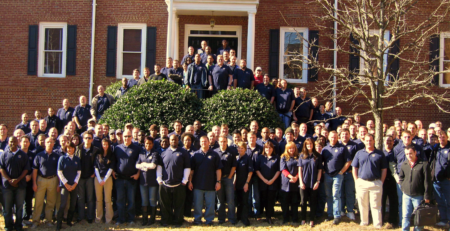Authorized VMware vSphere 5.0 ICM Class in February
[singlepic id=62 w=320 h=240 float=right]CED Solutions announces the Authorized VMware vSphere 5.0 ICM 5-day course starting on February 27th.
This course will prepare you to take the VCP 5 Exam. This hands-on training course explores installation, configuration, and management of VMware vSphere®, which consists of VMware ESXi™ and VMware vCenter Server™. The course is based on ESXi 5.0 and vCenter Server 5.0. Completion of this course satisfies the prerequisite for taking the VMware® Certified Professional 5 exam. The course may be taken in the classroom or taken as the live broadcast of the same class remotely.
Target Audience
- System administrators
- Systems engineers
- Operators responsible for ESXi and vCenter Server
Prerequisites
System administration experience on Microsoft Windows or Linux operating systems
Course Objectives
At the end of the course, you should gain an understanding of the functionality in vSphere 5 and be able to do the following:
- Install and configure ESXi
- Install and configure vCenter Server components
- Configure and manage ESXi networking and storage using vCenter Server
- Deploy, manage, and migrate virtual machines
- Manage user access to the VMware infrastructure
- Use vCenter Server to monitor resource usage
- Use vCenter Server to increase scalability
- Use VMware vCenter. Update Manager to apply ESXi patches
- Use vCenter Server to manage higher availability and data protection
Course Modules
Course Introduction
- Introductions and course logistics
- Course objectives
Introduction to VMware Virtualization
- Introduce virtualization, virtual machines, and vSphere components
- Explain the concepts of server, network, and storage virtualization
- Describe where vSphere fits into the cloud architecture
- Install and use vSphere user interfaces
Create Virtual Machines
- Introduce virtual machines, virtual machine hardware, and virtual machine files
- Deploy a single virtual machine
VMware vCenter Server
- Introduce vCenter Server architecture
- Introduce vCenter Server appliance
- Configure and manage vCenter Server appliance
- Manage vCenter Server inventory objects and licenses
Configure and Manage Virtual Networks
- Describe, create, and manage a standard virtual switch
- Describe and modify standard virtual switch properties
- Configure virtual switch load-balancing algorithms
Configure and Manage Virtual Storage
- Introduce storage protocols and device names
- Configure ESXi with iSCSI, NFS, and Fibre Channel storage
- Create and manage vSphere datastores
- Deploy and manage the VMware vSphereR Storage Appliance
Virtual Machine Management
- Deploy virtual machines using templates and cloning
- Modify and manage virtual machines
- Create and manage virtual machine snapshots
- Perform VMware vSphereR vMotionR and Storage vMotion migrations
- Create a vSphere vApp
Data Protection
- Discuss a strategy for backing up ESXi hosts and vCenter Server
- Introduce the VMware Data Recovery appliance
- Discuss solutions for backing up virtual machines efficiently
Access and Authentication Control
- Control user access through roles and permissions
- Configure and manage the ESXi firewall
- Configure ESXi lockdown mode
- Integrate ESXi with Active Directory
- Introduce VMware vShield Zones
Resource Management and Monitoring
- Introduce virtual CPU and memory concepts
- Describe methods for optimizing CPU and memory usage
- Configure and manage resource pools
- Monitor resource usage using vCenter Server performance graphs and alarms
High Availability and Fault Tolerance
- Introduce new vSphere High Availability (HA) architecture
- Configure and manage a vSphere High Availability cluster
- Introduce VMware Fault Tolerance
Scalability
- Configure and manage a VMware Distributed Resource Scheduler (DRS) cluster
- Configure Enhanced vMotion Compatibility
- Use vSphere HA and DRS together
Patch Management
- Manage ESXi patching using vCenter Update Manager
- Install Update Manager and Update Manager plug-in
- Create patch baselines
- Scan and remediate hosts
Installing VMware Components
- Introduce ESXi installation
- Describe boot from SAN requirements
- Introduce vCenter Server deployment options
- Describe vCenter Server hardware, software, and database requirements
- Install vCenter Server (Windows based)



